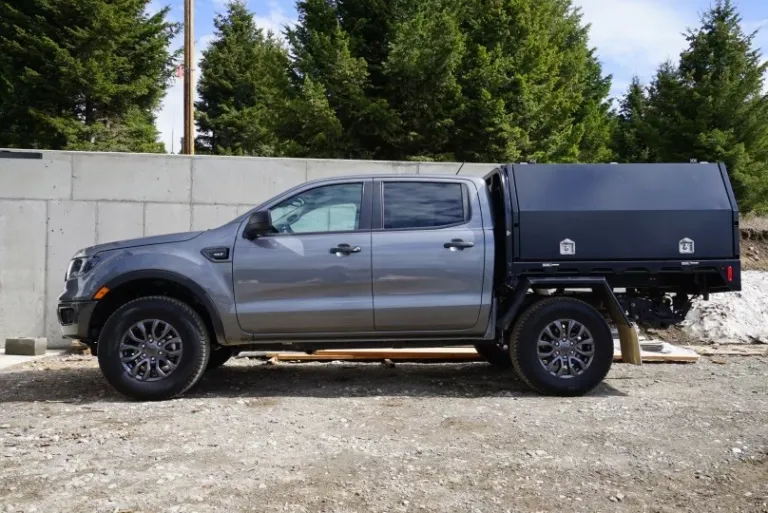Steel vs. Aluminum UTE Trays: What Actually Matters
- Oliver Klothshauf
- Sep 19
- 5 min read
Updated: Sep 24
In the realm of cab-chassis builds, your tray isn’t just an accessory—it’s infrastructure. It dictates how your rig performs under pressure, how it responds to terrain, and how it reflects the intent behind the build. Whether you’re navigating job sites, hauling payloads across agricultural zones, or crafting a platform that mirrors your operational ethos, the choice between steel and aluminum trays is less about aesthetics and more about engineering.
This isn’t a debate for the undecided. It’s a breakdown for those who’ve already run the numbers, weighed the trade-offs, and are looking for clarity before committing. We’re not here to sell you a finish—we’re here to dissect the function.

Weight
Aluminum trays offer a significant reduction in mass—often 40–50% lighter than steel. That differential directly impacts your Gross Vehicle Mass (GVM) and payload flexibility. Less tray weight means more room for tools, machinery, and personnel without breaching regulatory thresholds or compromising drivability.
However, the equation isn’t linear. Steel trays, while heavier, can enhance ride quality on unladen vehicles—particularly those with leaf-sprung rear suspensions calibrated for heavy loads. The added sprung weight stabilizes the rear end, mitigating bounce and improving road contact over uneven surfaces. If your rig runs light most days, steel may offer a smoother ride. If you’re consistently pushing payload limits, aluminum gives you breathing room without sacrificing compliance.
Strength
Strength isn’t optional—it’s foundational. Your tray must endure not just the weight of gear, but the dynamic forces of transit, terrain, and time. Steel excels in this domain. Its rigidity, impact resistance, and fatigue tolerance make it the preferred choice for high-abuse environments. Whether you’re dropping demolition gear, strapping down excavator attachments, or carting jagged landscape rock, steel trays absorb punishment without compromise.

Steel wins on brute force. It’s harder, stiffer, and more impact-resistant than aluminum. That means if your daily grind involves jackhammers, star pickets, sledge hammers, or landscaping rock, steel trays are built to take the punishment. They don’t dent easily. They don’t flex under load. And they don’t flinch when you drop half a ton of gear from the back of a loader.
Steel’s structural integrity also minimizes flex under load, which matters when precision matters—whether you’re mounting sensitive equipment or stacking gear that can’t afford to shift. Over time, steel resists stress fractures, weld fatigue, and deformation better than aluminum, making it a long-haul solution for daily-use rigs.
Aluminum, on the other hand, isn’t inherently weak—it’s just engineered differently. Modern aluminum trays feature reinforced cross-members, gusseted corners, and high-grade welds that rival steel in controlled-use scenarios. For operators who load with care, maintain consistent payloads, and prioritize weight savings, aluminum performs admirably.
But aluminum is more susceptible to denting and deformation under sharp or uncontrolled impact. If your workflow involves rapid gear tosses, unpredictable terrain, or high-contact environments, aluminum may show wear sooner. That doesn’t make it inferior—it makes it application-specific.
Terrain, use-case, and operational rhythm should dictate your choice. Construction zones, mining sites, and agricultural fields demand the brute resilience of steel. Coastal regions, trade work, and payload-sensitive builds benefit from aluminum’s efficiency and corrosion resistance.
And while you don’t need a metallurgy degree to know aluminum loses in a head-to-head clash with steel, you do need to factor in what that means for your workflow. Steel might be the better choice for hauling jagged materials or absorbing loader drops. But its added weight reduces your net payload, which could be a dealbreaker depending on your build goals.
Corrosion

Aluminum doesn’t rust. That fact alone makes it a top-tier choice for coastal operators, marine contractors, and anyone working in salt-heavy environments. No coatings. No touch-ups. Just raw, elemental resistance.
Steel, by contrast, demands protection. Hot-dip galvanizing, powder coating, and paint are all viable defenses—but chips and scratches are rust’s open invitation. The upside? Tray steel is thick. Even with surface corrosion, structural integrity typically holds for years. But if your rig lives near the ocean or sees regular salt exposure, aluminum is the low-maintenance winner—hands down.
Cost

UTE tray getting ready for its first Q/C check before proceeding to the next phase.
Aluminum trays generally command a higher price point—often 30% more in custom builds. That premium reflects not just material cost, but fabrication complexity. MIG/TIG welding, specialized labor, and longer build cycles all factor in.
Steel is magnetic. Aluminum isn’t. That distinction matters if your setup relies on magnetic mounts or if you’re working around sensitive electronics. Steel also sparks—something to consider if your job involves flammable materials or volatile environments.
Planning to use drop-sides as ramps? Steel offers superior rigidity but adds serious weight. Aluminum ramps are lighter and easier to handle solo, but may require reinforcement depending on load.
Adding hydraulic tippers, cranes, or other gear? Consult an engineer. Load stress, mounting points, and weight distribution all factor into whether steel or aluminum is the smarter base. And if you’re aiming for a color-matched tray to align with your cab—whether for branding or aesthetics—steel’s surface prep and paint adhesion make it the easier path.
Other Considerations: Safety, Function, and Fit
Choosing between steel and aluminum trays isn’t just about weight and strength—it’s also about how the material interacts with your tools, your environment, and your workflow.
Steel’s magnetic properties offer instant compatibility with tool racks, lighting systems, and quick-access gear. Aluminum requires alternative mounting solutions—clamps, bolts, adhesives—which can add complexity and cost.
Steel also sparks. That’s a serious consideration in high-risk zones: fuel depots, welding bays, agricultural sites with dry brush and diesel tanks. Aluminum’s non-ferrous nature offers a safer baseline. It won’t throw sparks under impact or friction, making it the smarter choice where ignition risk is real.
Using drop-sides as ramps? Consider weight and handling. Steel ramps are rigid and load-bearing, but heavy—often a two-person job in the field. Aluminum ramps are lighter and easier to maneuver solo, but may need reinforcement for heavier gear. If you’re regularly loading equipment over 500kg, consult your tray builder or engineer to ensure long-term integrity.
Mounting hydraulic gear, cranes, or tipper systems? This is where material meets engineering. These installations introduce concentrated stress points. Steel trays generally offer more tolerance, especially under dynamic loads. But aluminum can be engineered to handle them—with gusseting, cross-member reinforcement, and proper load distribution. Either way, don’t guess—get a certified engineer involved. A poorly mounted crane isn’t just inefficient—it’s a liability.
Color-matching and finish? Steel wins for paintability. If you’re building a fleet, branding your work vehicle, or chasing a clean, integrated look, steel trays are easier to prep and paint. Powder-coating, wet spray, and wraps adhere better to steel’s surface texture. Aluminum can be painted, but requires more prep—etch primers, adhesion promoters, and careful conditioning to avoid peeling or flaking.
For commercial operators or trades-man needing uniformity across multiple vehicles, steel offers consistency. For solo tradesmen prioritizing corrosion resistance over aesthetics, raw aluminum might be the better play.
Conclusion

Specs are one thing. Field experience is another. Talk to people in your industry. Ask what they run, why they chose it, and what they’d do differently. That’s where the real insight lives. We build systems that work. Whether you’re chasing payload, durability, or corrosion resistance, your tray should match your terrain, your tools, and your tolerance for compromise.
At 12° North, we don’t sell one-size-fits-all answers. We build systems that match your terrain, your tools, and your tolerance for compromise. Strength isn’t just a spec—it’s a strategy. Let’s build it right the first time.
Do you prefer aluminum or steel UTE trays? Let us know in the comments.

12° NORTH INDUSTRIES
Sales: 702.781.0302
Email: sales@12degnorth.com
Website: www.12degnorth.com












































